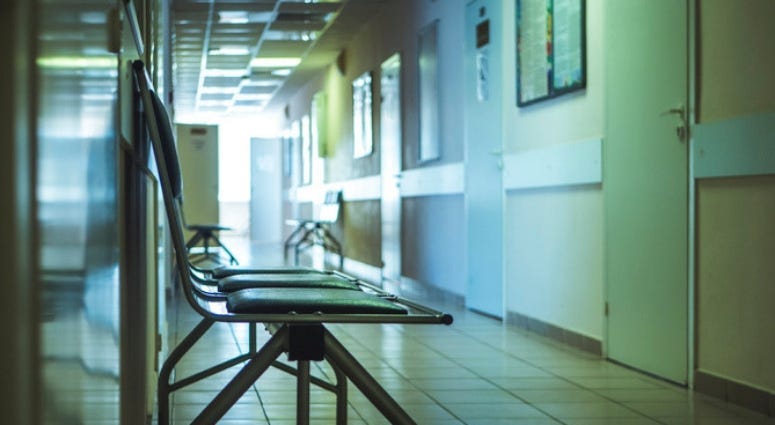
More than a year after the Department of Veterans Affairs Mission Act expanded opportunities for veterans to receive care in their communities paid for by VA, the department still has not set acceptable maximum wait times for that care.
In a Government Accountability Office (GAO) report released Monday, investigators found that though the community care expansion launched nationwide in June 2019, replacing the expiring Choice Act, there were still no standards for wait times, few community care providers were using VA's new software to communicate with VA hospitals and few VA hospitals had enough staff to handle the program.
The GAO has recommended VA establish maximum acceptable wait times for community care since 2013, long before the Mission Act, and again in 2018. But it never happened. Now, GAO is recommending that Congress consider forcing VA to set maximum wait times for the program.
VA allows up to 19 days for the department to complete the steps to create a community care referral in the first place, but it has no set allowable wait time for veterans to actually receive care -- meaning veterans could be left waiting an "indefinite" amount of time. Once the referral is processed, it's uncertain how long veterans may have to wait, and VA has no standard by which to hold its partnered community care providers.
By not overseeing wait times, VA may be violating the Mission Act, which places the responsibility on the department.
That was a critical piece of the Mission Act, since over the course of the Choice Act, reviews and congressional hearings found significant delays in scheduling appointments, insufficient community care provider networks and a lack of timely payments to those private providers. In 2018, while the Choice Act was still in effect and before it was replaced in June 2019, the GAO found that veterans "still experienced lengthy wait times when using community care" and "VA had a limited ability to monitor veterans' access to community care."
But VA still has not taken the GAO's recommendation to set standards for wait times.
"Under the Mission Act, VA is responsible for ensuring veterans' appointments are scheduled in a timely manner -- an essential component of quality health care," the GAO report reads. "Given VA's lack of action over the prior seven years implementing wait-time goals for various community care programs, congressional action is warranted to help achieve timely health care for veterans."
The House Veterans Affairs Committee is set to hold a hearing on the subject Wednesday.
VA officials told the GAO it doesn't have wait time expectations for community care providers because Congress did not require one "and wait times vary based on the community provider and location." But by not having a maximum wait time, GAO argued veterans could be left waiting for care so long it affects their health.
"VA has historically struggled to administer its community care programs effectively," the report reads. "Consequently, veterans have not always received timely care ... delays have been shown to affect patients' morbidity, mortality and quality of life."
Without wait-time standards, VA can't say whether the community care program has "helped to achieve its goal of reducing veterans' wait times for receiving care."
The GAO also outlined other ongoing issues with the Mission Act referrals, including that only about one-half of 1% of the community care providers (10,000 of about 1.7 million) were using VA's software to exchange patient information with VA staff.
Staff from one VA medical center told the GAO that when community care providers don't use the system, they have to receive veterans' medical records by fax or mail, which then have to be scanned into VA's electronic medical record system.
"This, in turn, created backlogs," the report read. The GAO argued this system could also lead to "delayed scheduling, lost documentation or delays in VA providers reviewing community provider notes" for patient care.
As of February, the GAO also found that most VA medical centers in Region 1 of the community care network "do not have the number of staff recommended" and weren't meeting required times for scheduling appointments, especially as community care referrals increased by 40% or even more than 70% in some areas. The lack of staff is also caused by ongoing vacancies at VA medical centers, the report showed.
VA Acting Cheif of Staff Brooks Tucker said in the department's response to the GAO report that VA did not plan to set maximum wait times for community care.
"We cannot mandate that community providers give priority placement to (VA patients) ahead of other patients," Tucker wrote. "VHA does actively monitor this ... on an ongoing basis to optimize service and timeliness."
VA has allowed eligible veterans to access care from community providers outside the department since at least 1945, but in the last 10 years, Congress and the White House have pushed for more opportunities to expand community care, including the Choice Act in 2014, which expired in 2019 and was replaced by the Mission Act. Veterans still receive most of their care at VA, but the number of veterans who have received care in the community increased 77% from 2014 through 2019. Last year, community care accounted for more than 19% of the department's budget for medical care. Specifically, in fiscal year 2019, VA obligated about $15.5 billion for community care compared to $64.3 billion for services provided at VA medical facilities.
Read the full report:
—
Wait times could increase with MISSION Act changes, VA IG warns
8 months in, VA doesn't know cost, effects of VA MISSION Act
